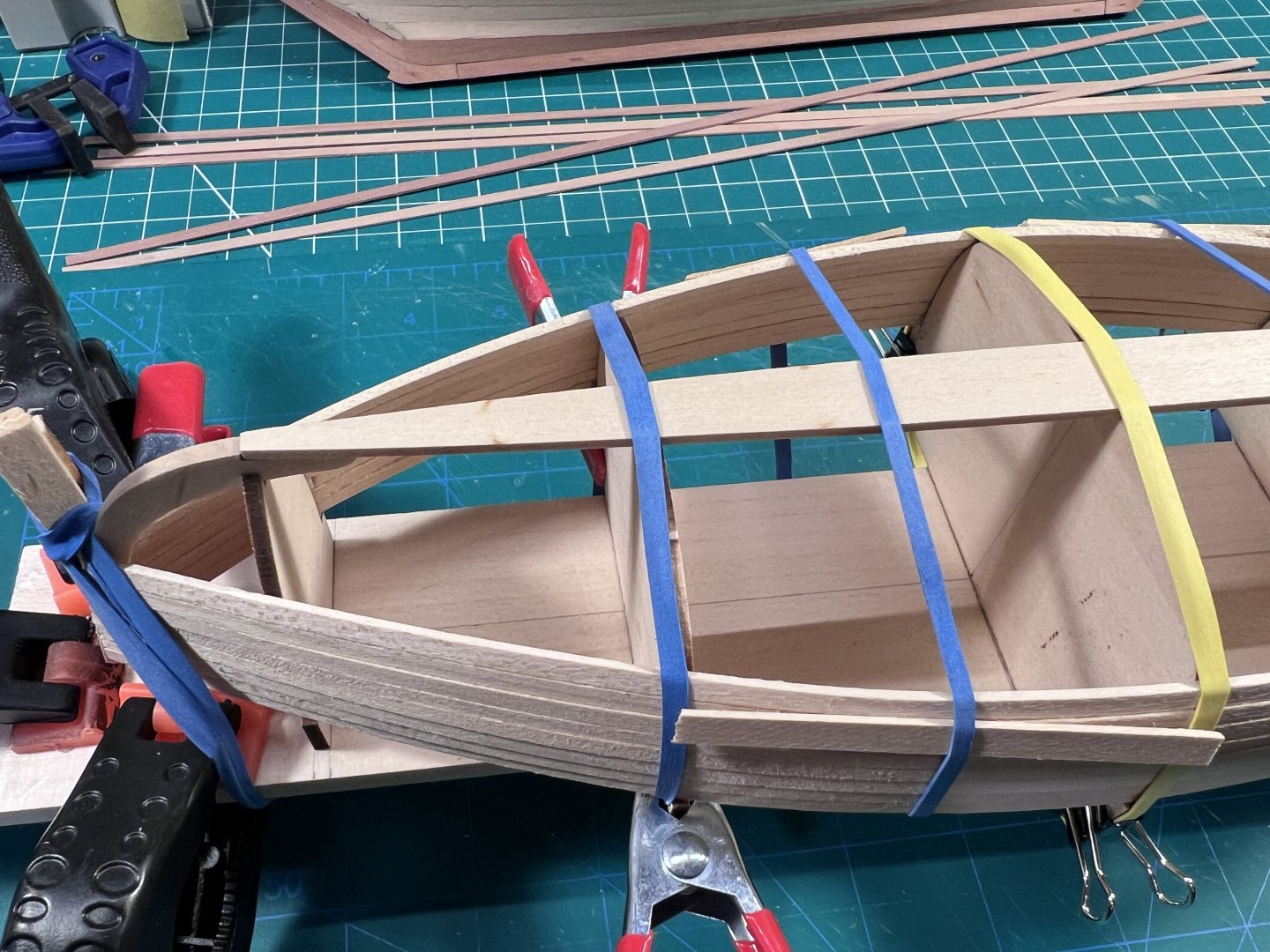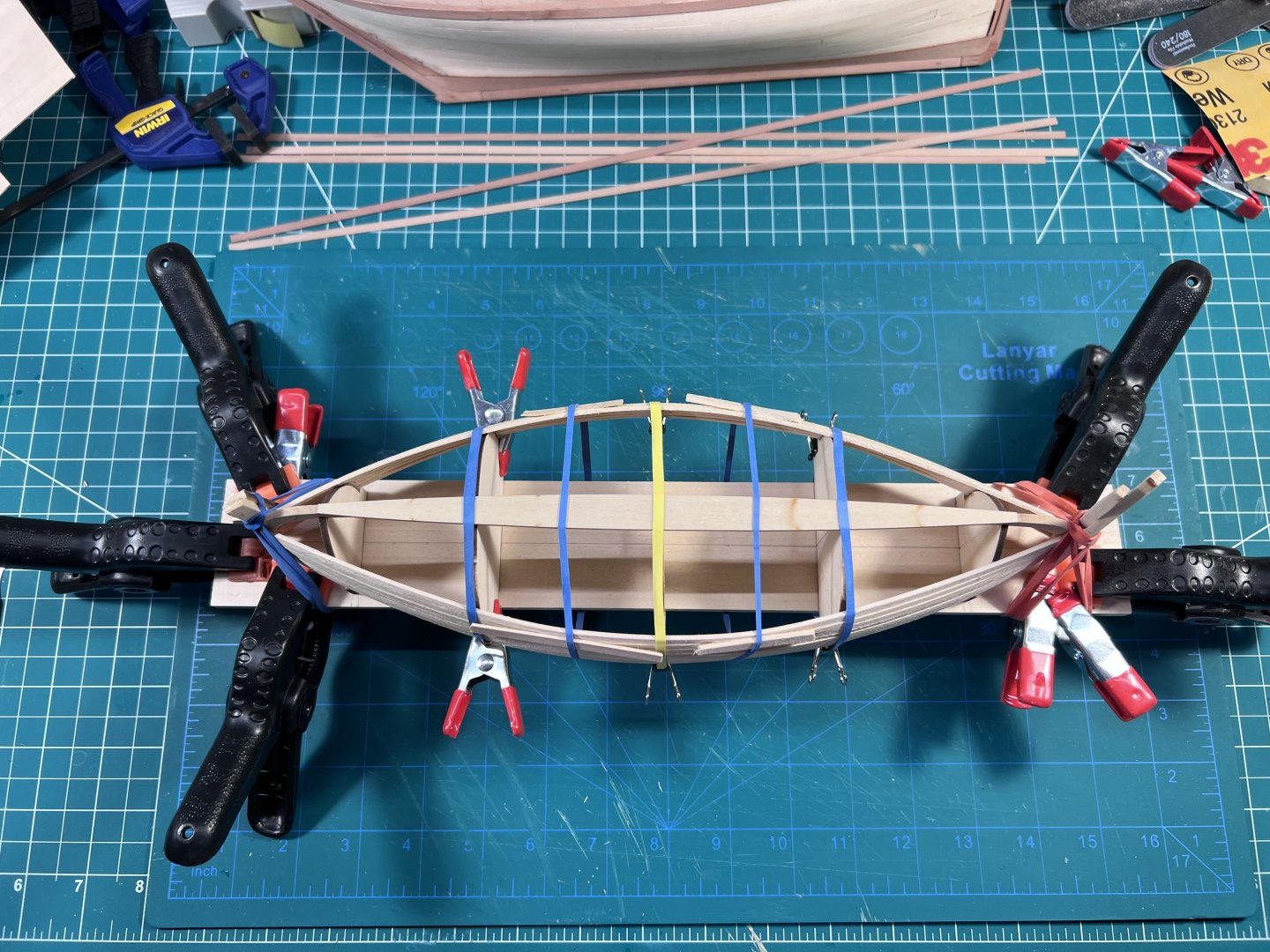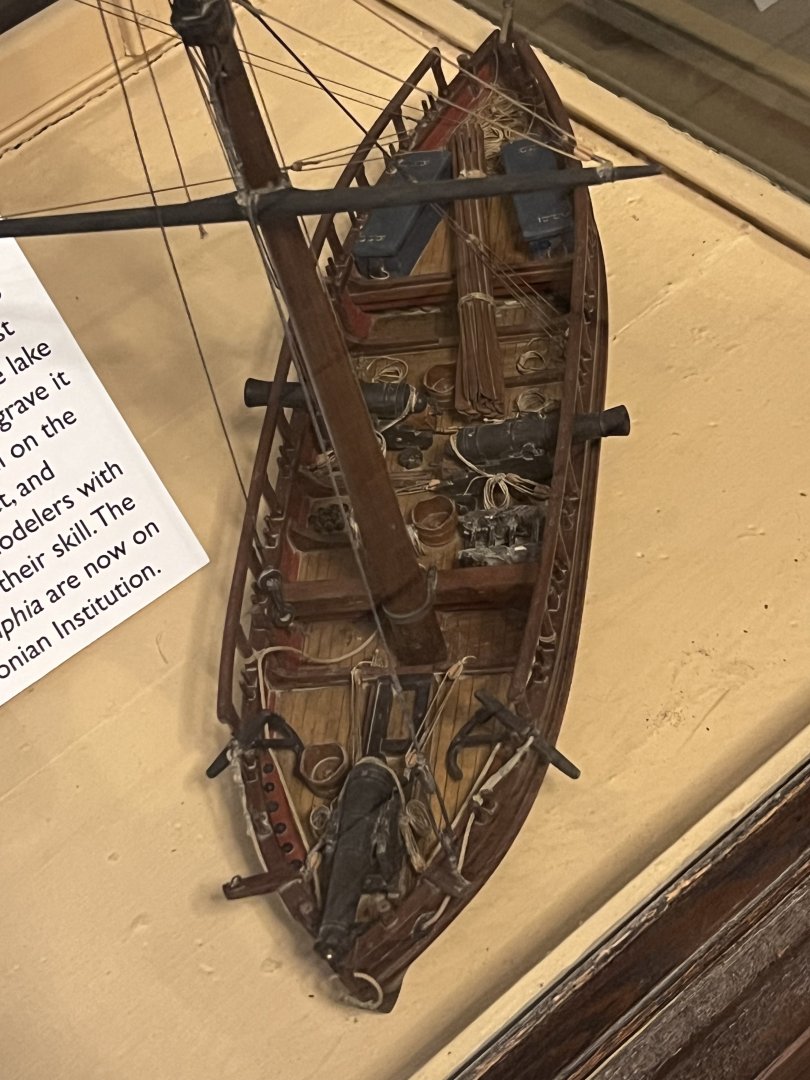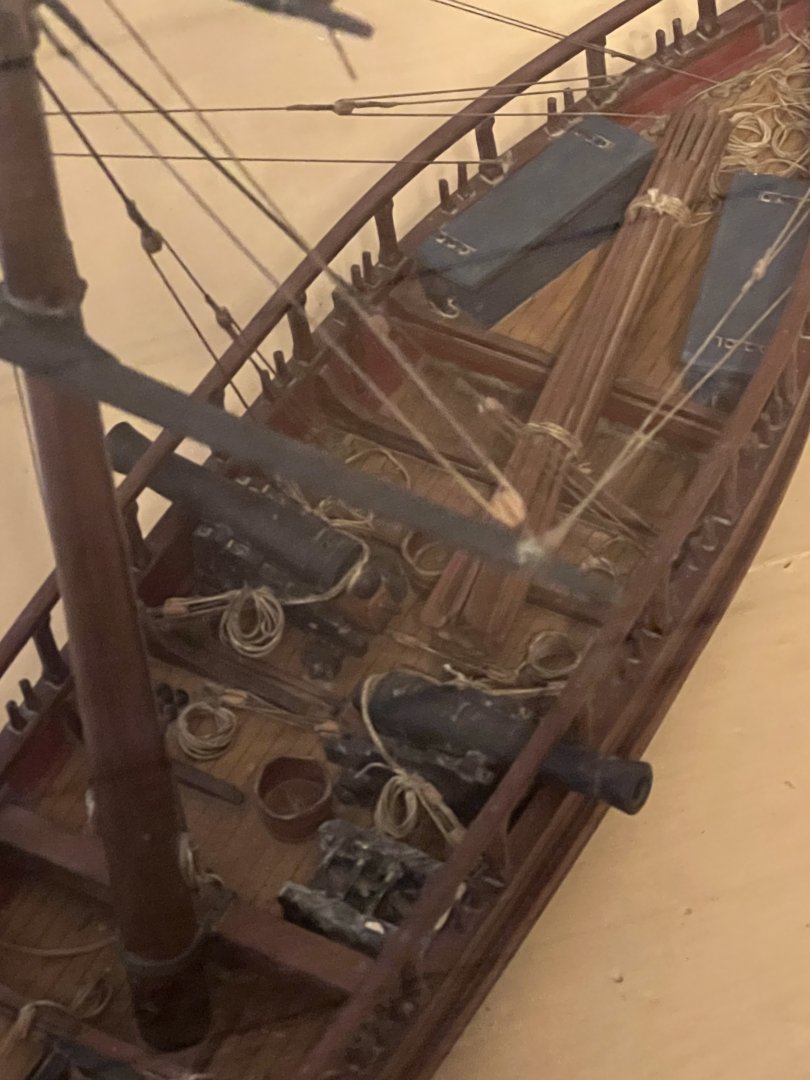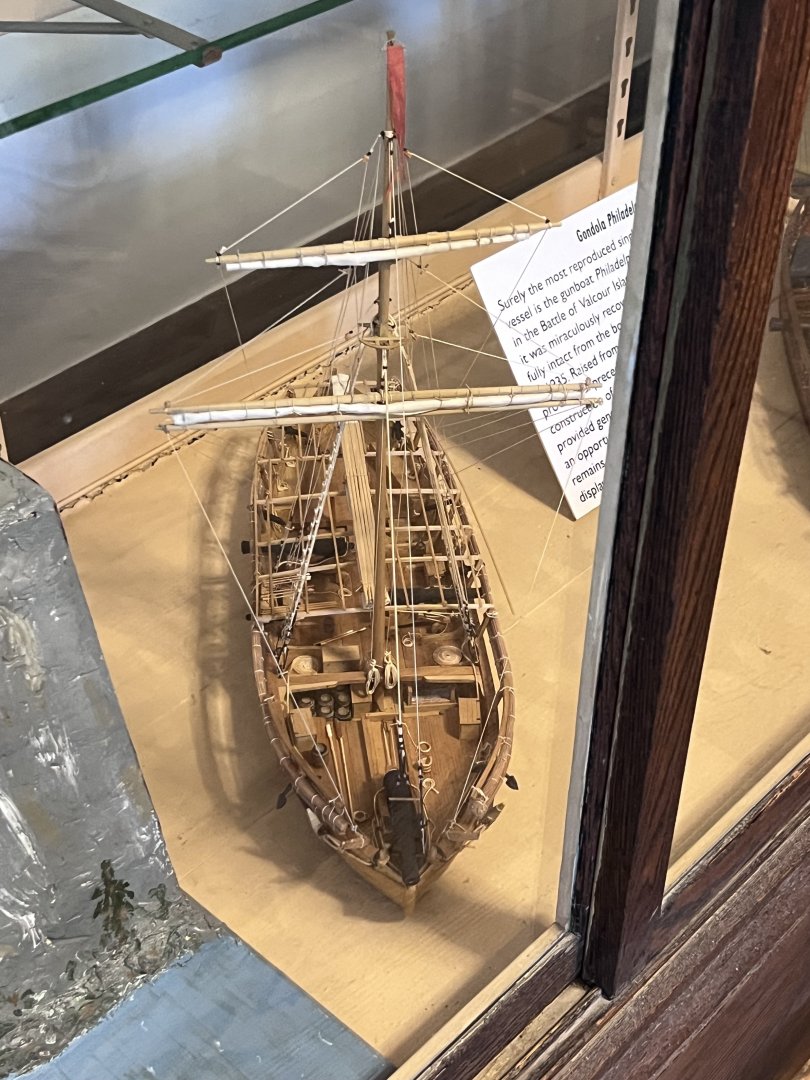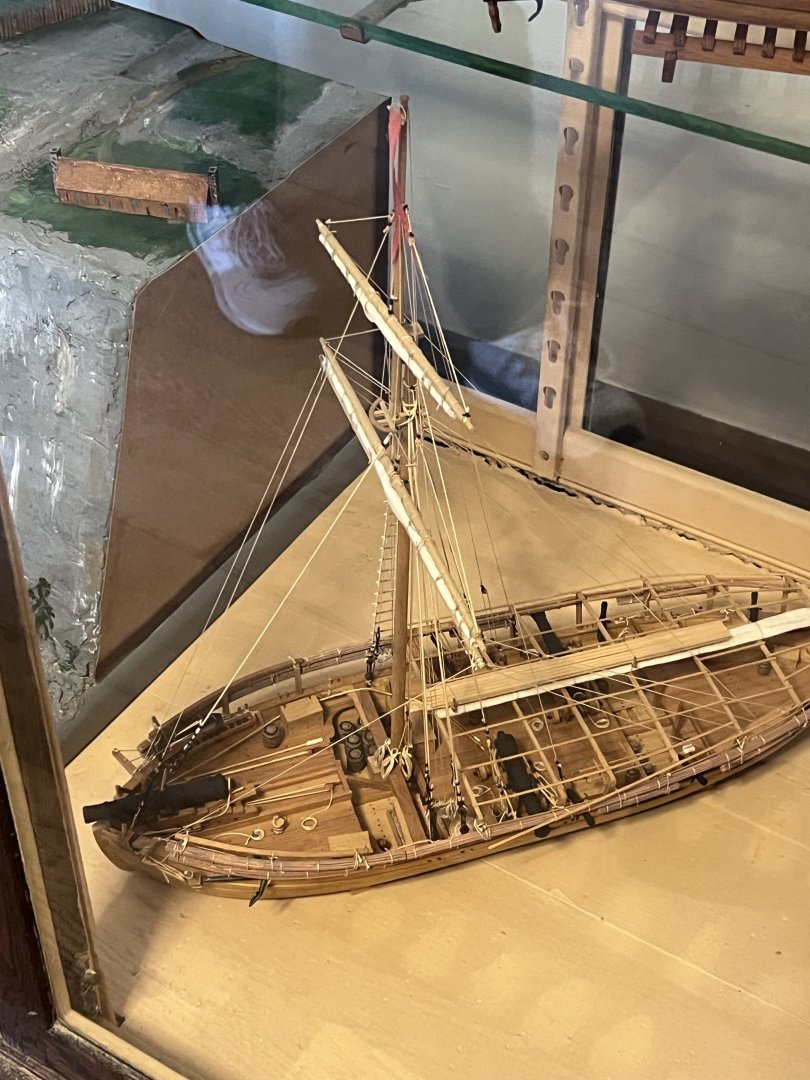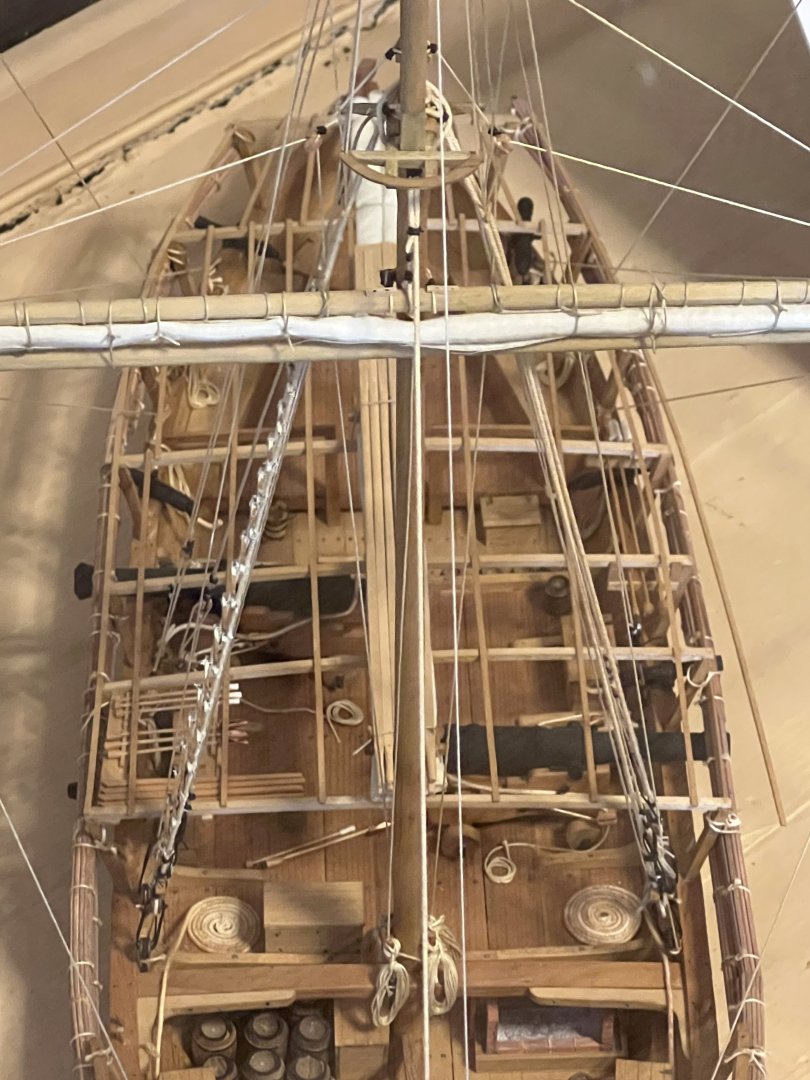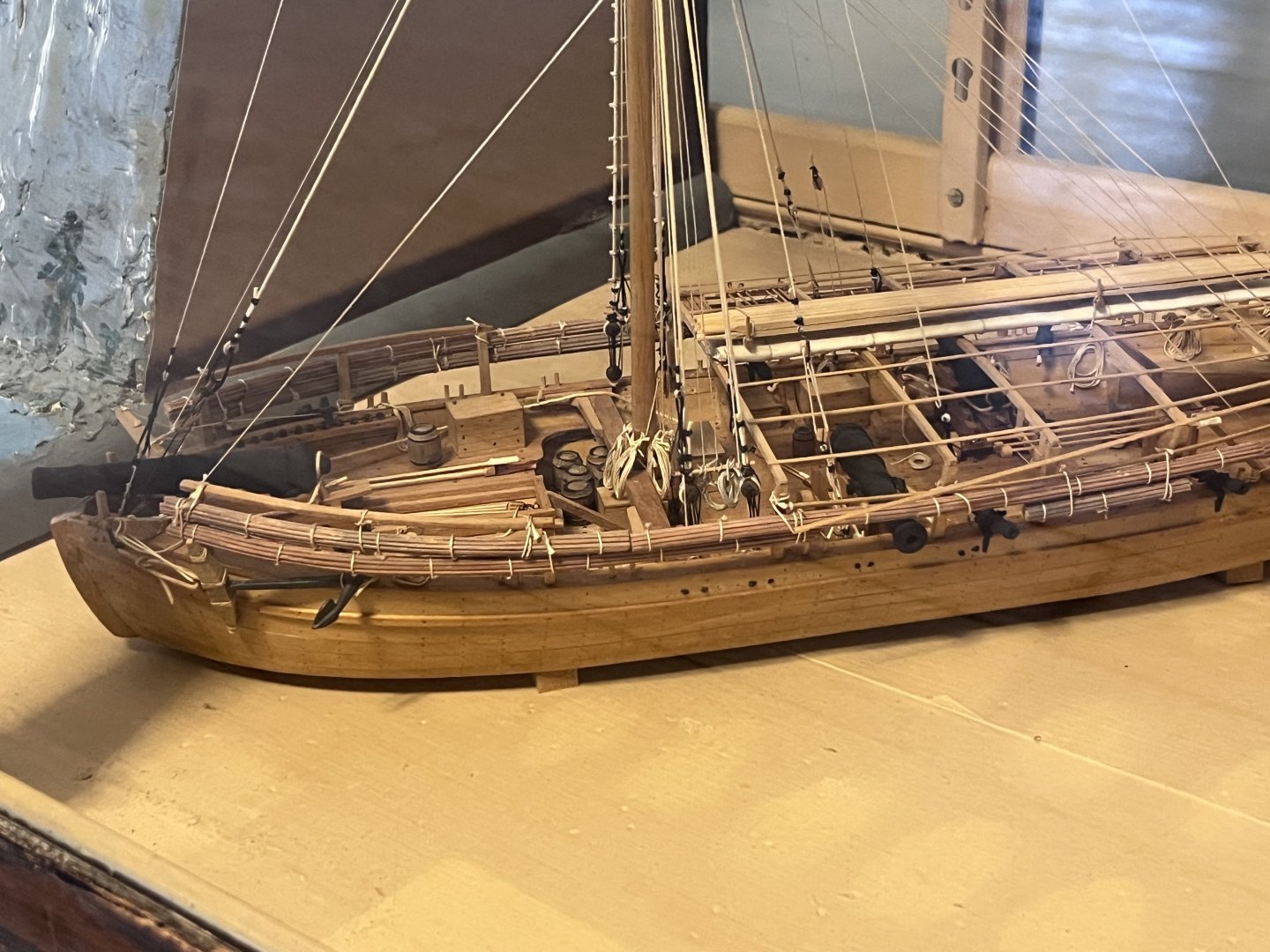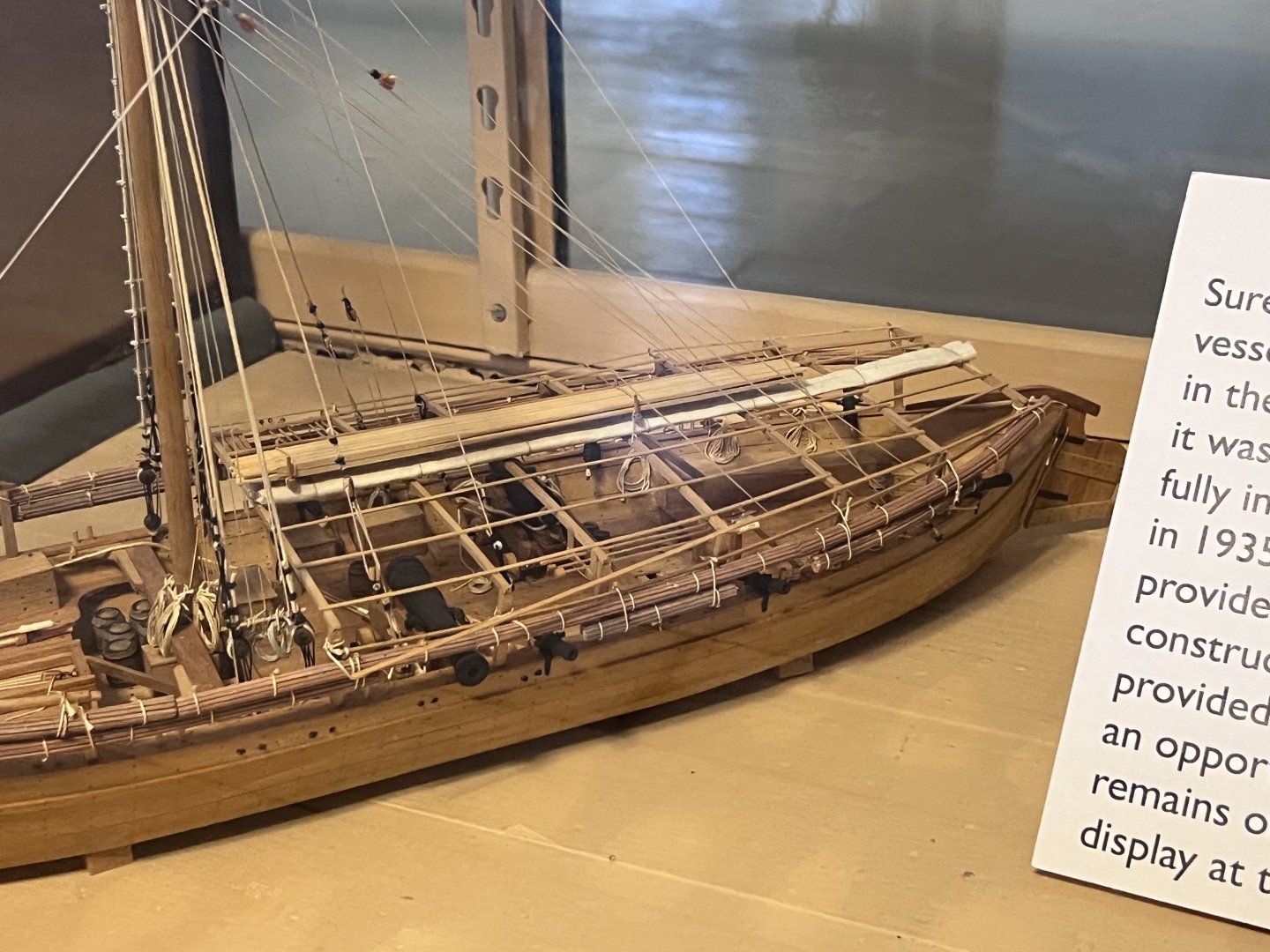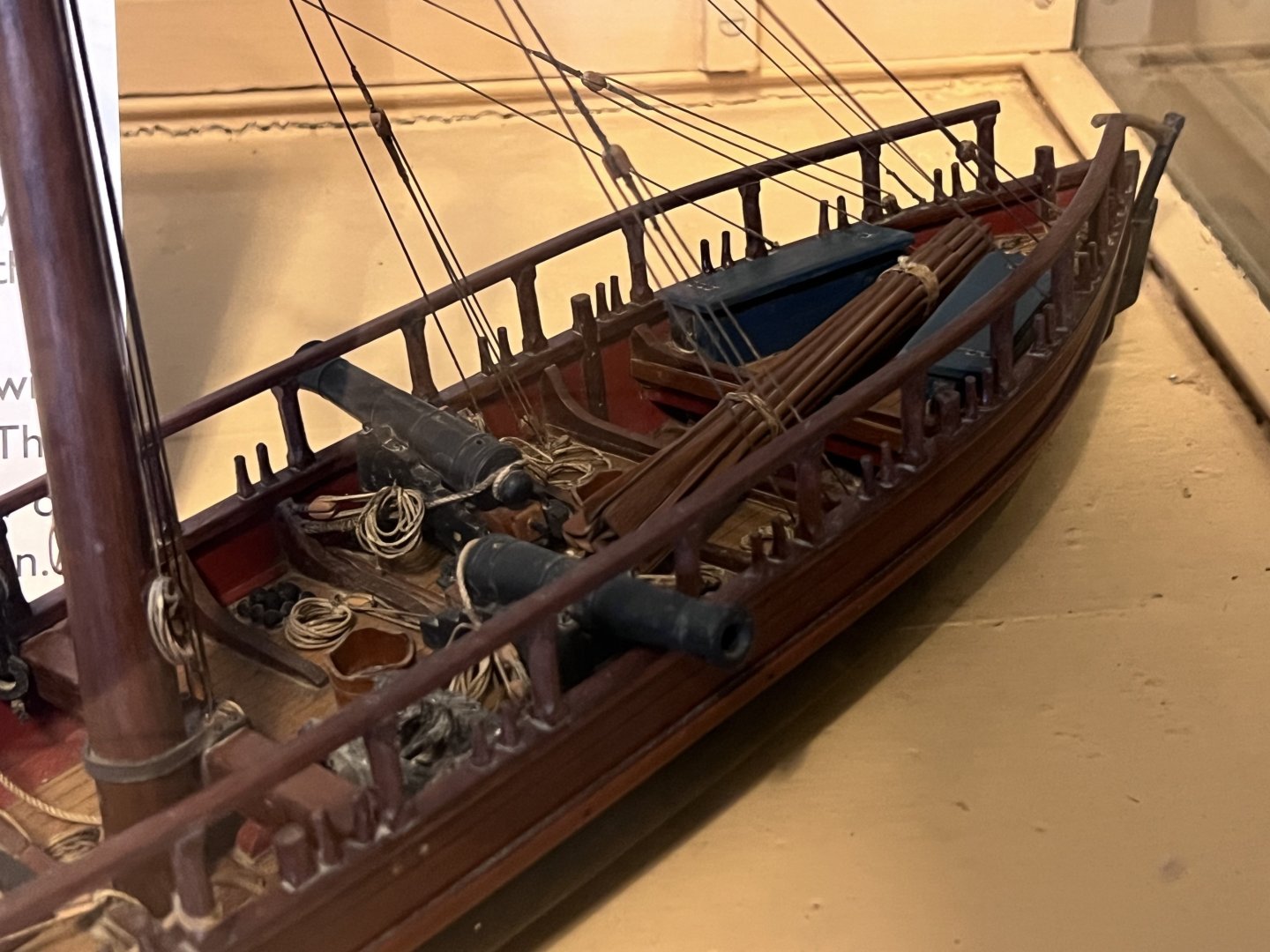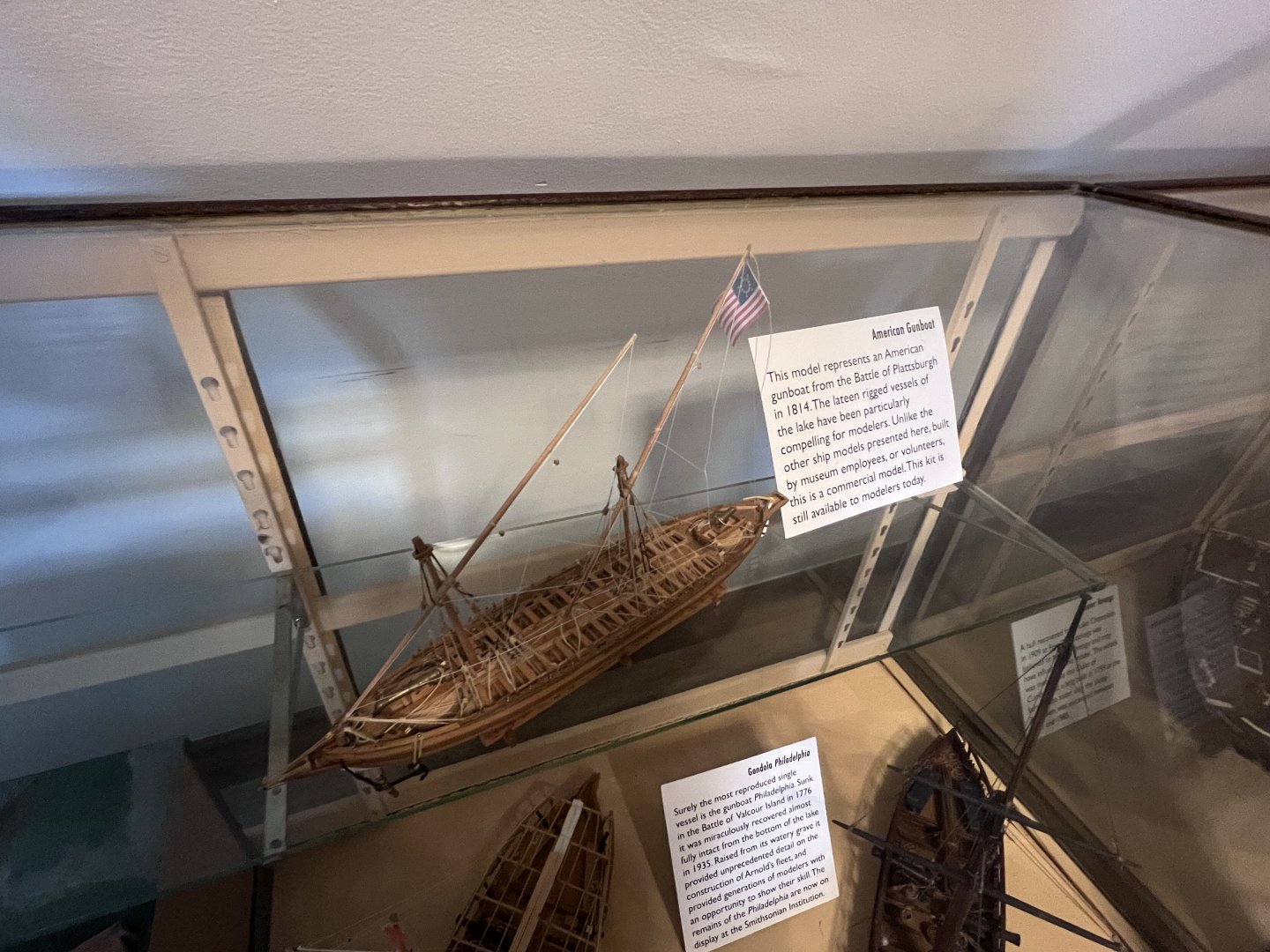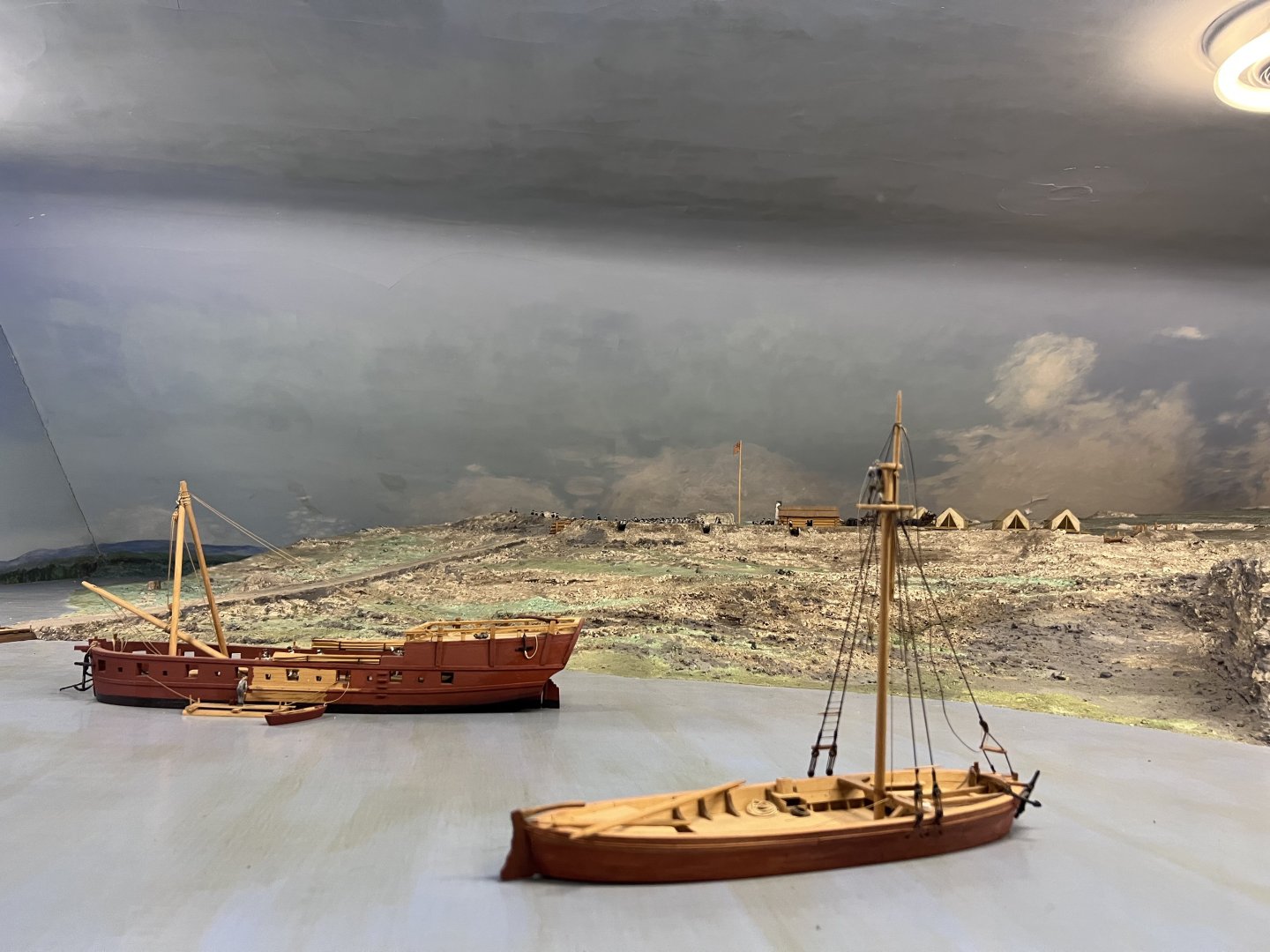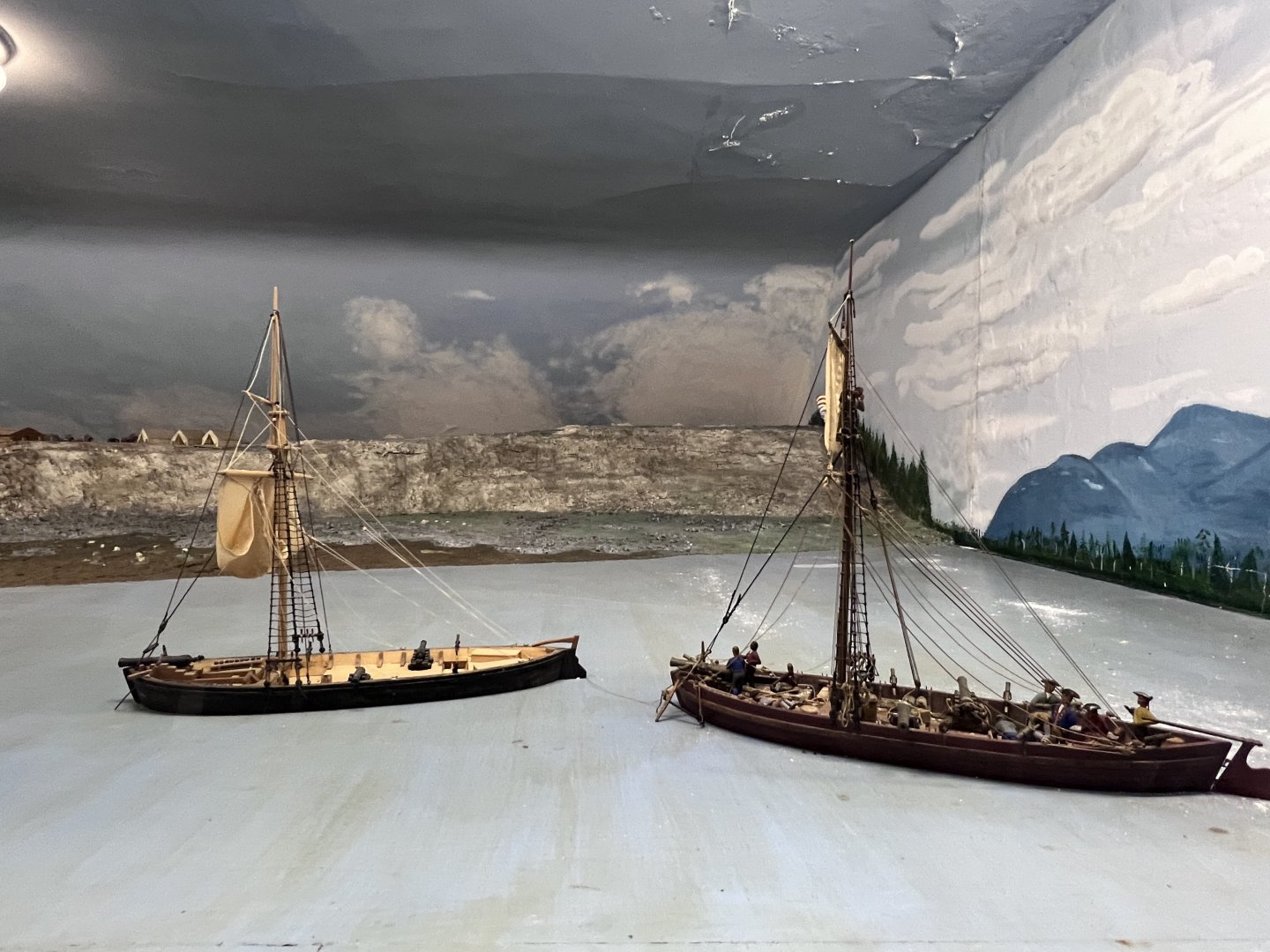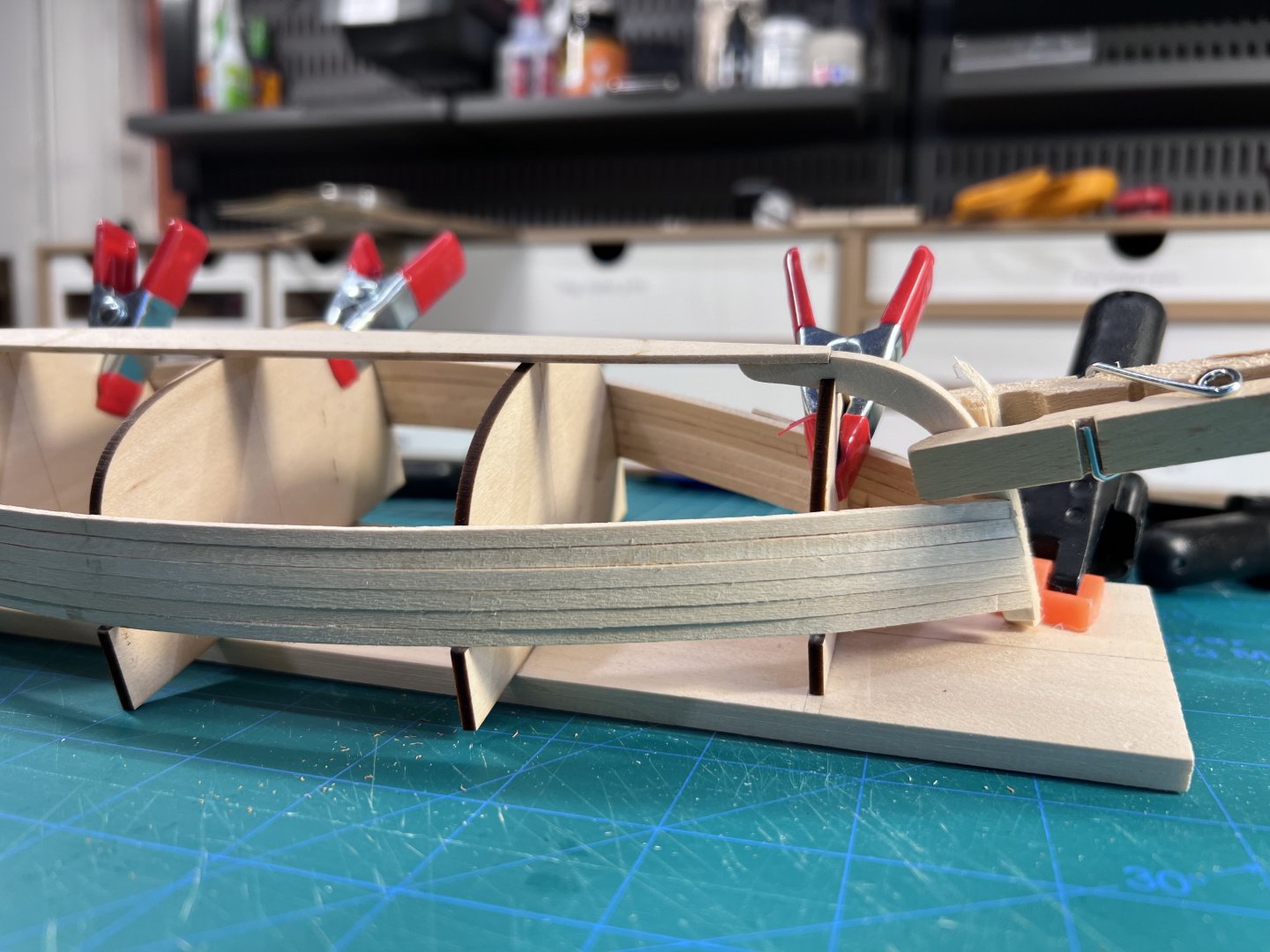
palmerit
NRG Member-
Posts
974 -
Joined
-
Last visited
Content Type
Profiles
Forums
Gallery
Events
Everything posted by palmerit
-
Loose Planks
palmerit replied to Rich Sloop's topic in Building, Framing, Planking and plating a ships hull and deck
Did you try using a super thin CA (super) glue? It can wick into narrow seams and you can push down with something other than your fingers. Not regular CA glue. Bob Smith is a recommended brand and they make super thin varieties, some of which are specifically designed to wick like that. ZAP also makes a thin CA glue. I never knew there was such thing as a super thin CA glue until I started building wooden ship models. I tend to avoid CA glue and prefer wood glue, but the super thin certainly has its uses (and CA glue or epoxy is needed to glue things other than wood). Depending on how wide the gap is, you can also dab a very thin piece of wire or a very thin pin into the thin CA glue - it'll wick to the metal - and use that to "inject" the CA glue into the gap. You'll certainly need to do some additional coats of paint after you make the repair. -
On that last photo you posted, I assume the planks need to curve up and around to the bottom edge of transom? If so, I imagine it's a challenge to get that tight curve right and to then have the planks transition down to the stern post. Are you planning to do shorter lengths of planks? While I have this kit in my stash, I'm waiting to start it until I get through the simpler models I've accumulated (and feel more comfortable to take on the added challenge).
-
@robert952 Thanks for the comments. I did bevel both ends on the stem posts and beveled the bottom of each plank to get the angle to follow the shape of the building frame - far more of a bevel as I've worked up (technically down) the hull. I currently have several different models I'm working on in semi-parallel fashion - though the Gunboat Philadelphia is on the back burner for now because it is fairly large. So for me it's fine to just do a plank every day or two. I'll probably go add my plank for the evening in a little bit. By contrast, I can spend hours working on one or two of the other kits. With the peabod, it seems I can't really do more than one plank at a time given all the rubber bands and clamps I need to put into place. That's perfectly fine for a fifth model on my table - well not physically on my table, it's near my table when I'm not working on it. I can't imagine in one evening adding more than one plank to the peapod. I could add a dozen planks to the Vanguard Lady Isabel I am also now building in one sitting on a Saturday - at least if I did not have a bathroom remodeling project I promised my wife I'd have finished over a year ago that has been taking up my weekends and some evenings. My impressions about the difficulty were really more for a true novice looking for a model kit to get started with. There's a bit of a calibration to wooden model ships that is different from other kinds of models. Any adult could - with some patience perhaps - build the most difficult Lego Technic model out there. Most adults could build with a bit of effort - maybe not exquisitely painted - all but the most difficult and fiddly plastic model with tons of PE parts (and perhaps not ones with particular poor instructions and perhaps not the Heller plastic ship models). The same is not true for a wooden model ship. When I first discovered this hobby a little over a year ago, if I had not discovered modelshipworld I probably would have used my knowledge of Lego and plastic models to pick something in the middle of the range, assuming that a Level 1 or Level 2, or Novice or Beginner kit, were for 8-12 year olds. It would be easy for a novice to see this little wooden boat and think it was an easy build. And yes, a Lego ship in a Bottle does count. I'm counting the Lego Endurance I built last winter.
- 24 replies
-
- maine peapod
- midwest products
-
(and 1 more)
Tagged with:
-
I had reviewed your build log but had missed the bobby pin and rubber band trick. I'm going to borrow that one.
- 24 replies
-
- maine peapod
- midwest products
-
(and 1 more)
Tagged with:
-
Did you also check out Vanguard Models? Beautiful and great as a first model (the Novice kits). Great materials, detailed instructions, lots of build logs here. My first was their Sherbourne.
-
I end up doing a lot of slight repositioning of planks while adding various clamps - and can only glue to the plank edges - so I think superglue would be a real mess in my hands (literally and figuratively). I’m struggling a bit to make that turn. I shaped the bottom of the planks a bit at an angle, which helps. I clamp to keep the hull following the shape of the build structure and clamp to try to avoid too much clinker effect. I’m hoping it won’t be too much that a sanding can’t smooth out. We’ll see. I have no idea how I’ll clamp when I get closer to the bottom board. The kind of just says “add planks” with no pointers. I’m astounded people could build these before the age of the internet. Maybe that’s why there were probably more model clubs back then. Our “clubs” now are virtual.
- 24 replies
-
- maine peapod
- midwest products
-
(and 1 more)
Tagged with:
-
I wonder how many beginners have bought this little boat for their first model and given up. It is a “Skill Level 2” but I could imagine an adult thinking surely a Skill Level 1 is for a child. This little model is quite the challenge - in an interesting way - with the dozens of thin planks that need to be shaped carefully. I do about a plank every day or two. It’s a good second or third or fifth model to have in the mix at the same time. I have no clue how someone could just plunge ahead on it for hours at a stretch.
- 24 replies
-
- maine peapod
- midwest products
-
(and 1 more)
Tagged with:
-
question about waxing thread
palmerit replied to ford34tom@comcast.net's topic in Masting, rigging and sails
I use Renaissance (conservator's) Wax because a bunch of people recommended it over beeswax. I'm no expert, but the posts say that beeswax is acidic and attracts dust, whereas the conservator's wax dries clear, is neutral pH, and does not attract dust. It's expensive but you use only a tiny bit of it. I have no expertise on this. Just passing along what I've read. -
Preparing Standing Rigging.
palmerit replied to ford34tom@comcast.net's topic in Masting, rigging and sails
If you use glue - I do - check what color it dries to when it’s going to be exposed, like on rigging. I put a drop of different glues I had on a card and left them to dry - including both “white” glues and “yellow” glues. Only a white bookbinders glue dried completely clear: https://www.amazon.com/gp/aw/d/B07RV5VW2T Even some of the other white glues I have dried kind of opaque. I use this (more expensive) book binders glue when the dried glue might show (like on rigging). -
Graf Spee colors
palmerit replied to scraig's topic in Painting, finishing and weathering products and techniques
Maybe try putting "1/350 Trumpeter Graf Spee" in the title? You might also try to direct message anyone who has built this particular model (google "trumpeter Graf Spee site:modelshipworld.com" and you'll find some) - click the messages icon in the upper right corner to get to where you can direct message members. -
A lot of people use bondo (when painted over). It dries hard but is easy to sand. https://www.amazon.com/gp/aw/d/B0007ZG9TO?psc=1&ref=ppx_pop_mob_b_asin_title For things I’m painting over I use Elmer’s wood filler. Also hard and fairly easy to sand. https://www.amazon.com/gp/aw/d/B000BQTXQK?psc=1&ref=ppx_pop_mob_b_asin_title I use the sawdust and glue when it’s something that will not be painted over. I think wall joint compound would be too brittle.
-
One tricky thing with this model with all the thin planks is that I realized the planks were starting to separate from the build frame (separate in that a gap started forming). I wet down the planks and tightened them down with rubber bands to bend them in a bit. For future planks I’m going to add more of a bevel to the bottom frames than I have so far.
- 24 replies
-
- maine peapod
- midwest products
-
(and 1 more)
Tagged with:
-
I only have five in progress (it is amazing how often I’ll glue pieces on one to leave to dry, paint parts of on another, have pieces bended until dry on another). It does take some organization and a bit of space - and I’m working on smallish models. Sometimes I’ll have a few hours in the evening to spend on some models and then I’ll have lots of work work to catch up on other evenings - like tonight.
- 11 replies
-
- Endeavour
- j-class yacht
-
(and 1 more)
Tagged with:
-
I will be getting back to working on the Philadelphia. It’s a pretty large model and I have several small ones I’m working on in parallel. The next step is faring, and this one will generate a lot of sawdust and needs space. In the meantime, we visited Fort Ticonderoga while visiting our younger son this weekend. At the museum, they had a bit on the Gunboat Philadelphia - not surprising since it was engaged in battle and sunk north of the fort. Sharing photos of some models they had. Also sharing some photos of a large diorama they had, which included another model of the Philadelphia.
-
Alcohol or acetone - potentially with a few applications - will work. You’ll want it to dry overnight before regluing. I got impatient trying to pry apart glued pieces and got a scalpel blade in my palm.
- 22 replies
-
- Dory
- Lowell Grand Banks Dory
- (and 4 more)
-
Tapering Masts and Arms the easy way
palmerit replied to Johnny Mike's topic in Masting, rigging and sails
This approach works if you have a constant taper - or just want to do the first pass at a taper and then fine tune. Some of tapered masts and yards I’ve had to do aren’t linear. -
Tapering Masts and Arms the easy way
palmerit replied to Johnny Mike's topic in Masting, rigging and sails
Another solution is to put an end of a dowel in a power drill (wrapping the end in paper of cloth so as not to intent it). Maybe that’s what you mean “by hand”. I use a clamp to keep the drill turning. Then use various grits of sandpaper to shape. Way better than trying to do it by hand, with a blade, or with a plane - at least for me. Need digital calipers to measure. This approach could work great so long as you get the angle right on the pieces (and could be more efficient) - if you have a power sander (I have one for big pieces, my hobby one is a non-powered Ultimation). -
Planking problems
palmerit replied to Mrgj24's topic in Building, Framing, Planking and plating a ships hull and deck
Pretty common problem. I’ve been there. To avoid this, a few things: - read whatever you can here and elsewhere about planking and find videos online - e.g., under “Modeling Techniques” at the top of this site, you’ll find links to info about planking - you’re doing full width planks all the way (or it seems like you are) and these may need to be tapered a bit (thinner near the bow than mid- ship), but never thinner that half the plank width - you like need to do some edge bending too (using a heat source like a plank bender, soldering iron, travel iron) with a bit of water - this is bending in the direction planks don’t naturally want to bend - you can achieve it with clamps, heat, water, practice - most models don’t give great guidance on how to shape and bend planks Getting planking right is probably the hardest aspect of ship modeling - it is more me. If you look at my Sherbourne it has huge gaps. You can “fix” the problem with lots of wood filler and sanding. I’d suggest trying to remove the planks and trying again, using alcohol or acetone to release the glue. -
- 24 replies
-
- maine peapod
- midwest products
-
(and 1 more)
Tagged with:
About us
Modelshipworld - Advancing Ship Modeling through Research
SSL Secured
Your security is important for us so this Website is SSL-Secured
NRG Mailing Address
Nautical Research Guild
237 South Lincoln Street
Westmont IL, 60559-1917
Model Ship World ® and the MSW logo are Registered Trademarks, and belong to the Nautical Research Guild (United States Patent and Trademark Office: No. 6,929,264 & No. 6,929,274, registered Dec. 20, 2022)
Helpful Links
About the NRG
If you enjoy building ship models that are historically accurate as well as beautiful, then The Nautical Research Guild (NRG) is just right for you.
The Guild is a non-profit educational organization whose mission is to “Advance Ship Modeling Through Research”. We provide support to our members in their efforts to raise the quality of their model ships.
The Nautical Research Guild has published our world-renowned quarterly magazine, The Nautical Research Journal, since 1955. The pages of the Journal are full of articles by accomplished ship modelers who show you how they create those exquisite details on their models, and by maritime historians who show you the correct details to build. The Journal is available in both print and digital editions. Go to the NRG web site (www.thenrg.org) to download a complimentary digital copy of the Journal. The NRG also publishes plan sets, books and compilations of back issues of the Journal and the former Ships in Scale and Model Ship Builder magazines.




